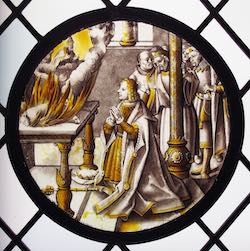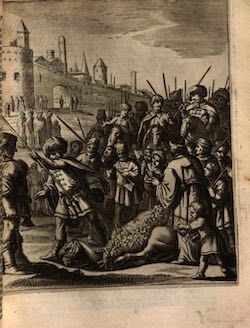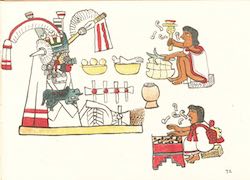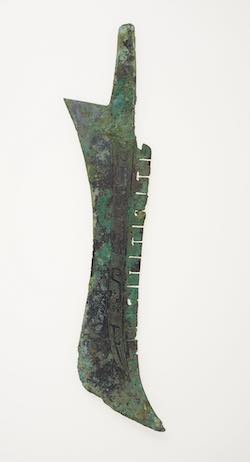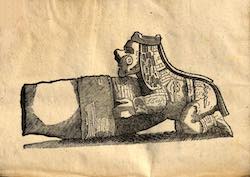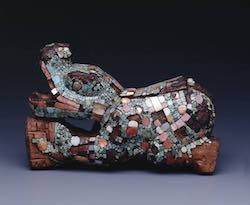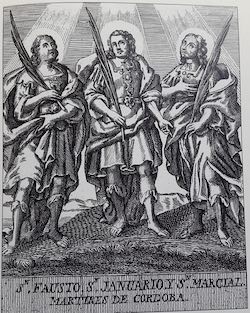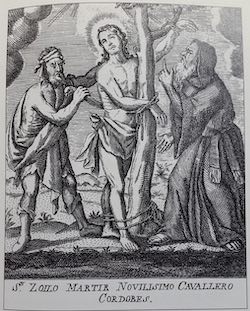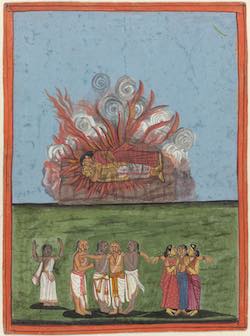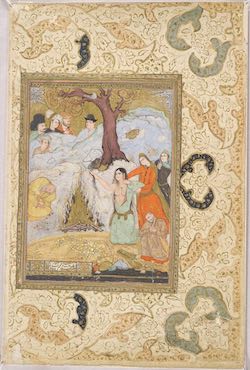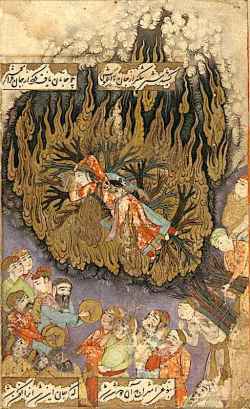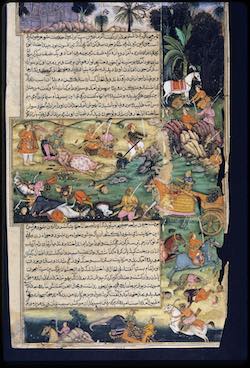Topic: 2. Sacrifice and religion: Comparisons, Antiquarians, Anthropology (16th-18th Century)
Religious sacrifices across various cultures and contexts sparked widespread interest in Early Modern Europe. As Christianity expanded into regions inhabited by "infidels" and "pagans", Europeans encountered a diverse array of sacrificial customs, ranging from the Sati rituals in India to the Aztec sacrifices in the Americas. This cross-cultural exposure captivated a wide audience, including theologians, philosophers, political thinkers, antiquarians, orientalists, missionaries, poets, artists, and even the general public. These encounters broadened the European understanding of sacrifice and led to a critical reassessment of classical and biblical sacrificial rites. This section includes:
- Sources: A selection of early modern printed materials, which include descriptions of the Americas, Asia, and Africa, alongside antiquarian and philological studies on religious sacrifice in classical antiquity and beyond. It also presents early modern works of ethnological observations and the first attempts to compare different sacrificial practices in various traditions and contexts, laying the groundwork for disciplines like the history of religions and anthropology.
- Iconographic Representations: A rich collection of images from the 16th to 18th centuries, illustrating a range of sacrificial rituals and practices as seen in different cultural and geographical contexts.
- Related Bibliography: An extensive bibliography spanning scholarly works from the 19th to 21st centuries, providing contemporary analyses and interpretations of these early studies and observations.
Roundel with Sacrifice in the Temple [1515 -1525]
The Met Cloisters, New York
Sacrifice of an Aztec [1562]
from: Codex Telleriano - Remensis
Bibliotèque Nationale de France, Paris
Sacrifice of an Aztec [1562]
from: Codex Telleriano - Remensis
Bibliotèque Nationale de France, Paris
Sacrifice of Codrus [1350 - 1400]
from: Speculum humanae salvationis (Bologna) [Arsenal, Ms 593, fol. 18v]
Bibliothèque nationale de France, Paris
Sacrifice of Jephthah [1350 - 1400]
from: Speculum humanae salvationis (Bologna) [Arsenal, Ms 593, fol. 7v]
Bibliothèque nationale de France, Paris
Sacrifice of Polyxena (15th)
from: Boccaccio, Giovanni. Des cleres et nobles femmes, BNF, Fol. 47r.
Bibliothèque nationale de France, Paris
Sacrifice of the Camel (1666)
from: Della Valle, Pietro, De volkome beschryving der voortreffelijke reizen van de deurluchtige reisiger Pietro della Valle, edelman van Romen, in veel voorname gewesten des werrelts, sedert het jaer 1615, tot in 't jaar 1626 gedaan. Amsterdam, Abraham Wolfgang, 1666, vol. 1, pag. 128
Sacrifices for the Dead [1526 - 1550]
from: Codex Magliabecchiano, c. 72r
Biblioteca Nazionale di Firenze, Florence
Sacrificial Knife (1634)
from: Liceti, Fortunio, Pyronarcha, sive, De fulminum natura deque febrium origine, Crivellarum, Padua, 1634, p. 123
Sacrificial Knife, Zoomophic Handle [1300-1521]
Museo delle Civilità/MPE Pigorini inv. 4215
San Fausto, San Januario y San Marcial. Mártires de Córdoba. (17-18th Century)
from: Picture in anonymous devotional card
San Zoilo Mártir, Nobilísimo Cavallero Cordobés. (17-18th Century)
from: Picture in anonymous devotional card
Satī (17th)
from: Manuscript, Iran
Harvard Art Museums/Arthur M. Sackler Museum, The Norma Jean Calderwood Collection of Islamic Art
Sati Funeral Practice (1611)
from: Johannes Isacius Pontanus, "Rerum et urbis Amstelodamensium historia", Amsterdam, 1611, p. 189
Satī. Gentile women of the caste of the cattle drivers, who is buried alive with her husband after he had died [1540]
Codice Casanatense, Biblioteca Casanatense, ms. 1889, fol. 64r, Rome
Satī. The bride immolates herself on the funeral pyre (1657)
from: Isfahan, Iran
The Israel Museum, Jerusalem
Satrughna is wounded by Kusa and Lava during Rama's horse-sacrifice (1616)
from: Leaf from a dispersed manuscript of Razmnama
Harvard University, Fine Arts Library, SS_22349926

